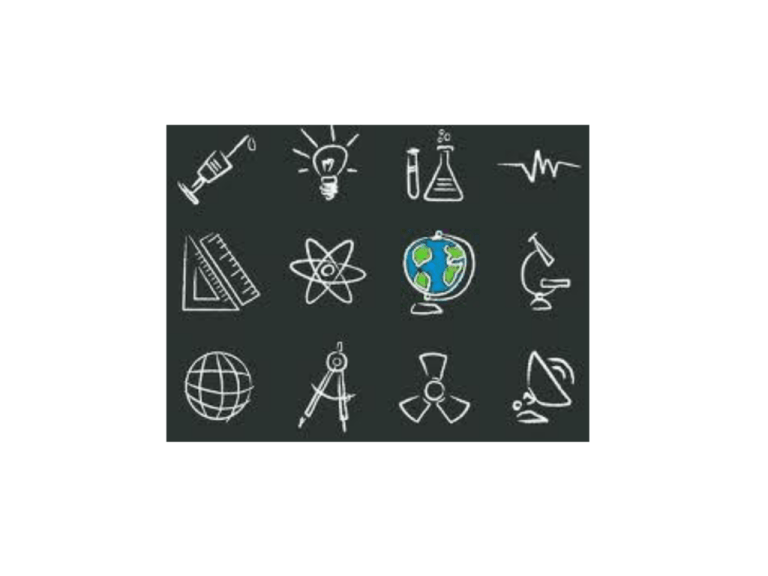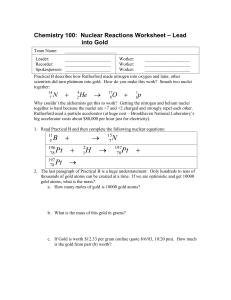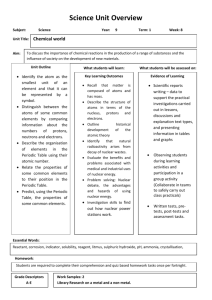APES 2 Science Basics
advertisement

Science is built up of facts, as a house is built of stones; but an accumulation of facts is no more a science than a heap of stones is a house. Henri Poincare Science Chapter 2 Science, Matter, Energy, and Systems Key Concepts • Scientists collect data, develop theories, models and laws • Matter is made up of atoms, elements and molecules • Law of conservation of matter • First law of thermodynamics • Second law of thermodynamics • Systems have inputs, outputs and feedback Science: A Search for Order • Effort to discover how nature works • Uses observations, measurements, experiments • Assumes that natural events follow causeand -effect The Scientific Method • • • • • • • • Identify problem Literature search Ask question to be investigated Perform experiment Analyze data (check for patterns) Formulate hypothesis to explain data Perform experiment to test hypothesis Accept hypothesis/ Reject hypothesis Revise hypothesis • Scientific Theory Elements of the Experiment • Variables: factors that affect processes in the experiment *independent variable- tested variable ** dependent variable- measured variable • Only I variable is tested at a time • Experimental group has independent variable • Control group lacks tested variable (provides basis for comparison) Features of Scientific Processes • • • • • • Curiosity Creativity Critical thinking Skepticism Reproducibility Peer review Goals of Science • Scientific theories: well-tested, widely accepted related hypotheses *may be revised with new info • Scientific laws/law of nature: well-tested, widely accepted descriptions of what is found repeatedly in nature *cannot be broken • Models: simulation of a natural system Results of Science • Tentative/frontier science: results that are not yet reliable (new findings) • Reliable science: accepted by scientific consensus • Unreliable science: rejected by scientific consensus (usually because results were not reproducible) Limits of Science 1. Scientists cannot prove or disprove anything absolutely 2. Scientists are not totally free of bias 3. Natural systems involve too many variables to control (important to environmental science) 4. Statistical sampling is often used to estimate measurements (think: probability) 5. Cannot be applied to ethical questions Matter • Anything with mass, volume • Physical states: solid, liquid, gas • Exists as an element (fundamental) or in compounds (combinations of different elements) Atoms/Elements • Basic unit of matter *atomic theory: atoms make up elements • Internal structures: neutrons (n), protons (p), electrons (e) • Atomic number: equals number of protons • Mass number: total number of protons and neutrons • Isotopes: same atomic number, but different mass Helium electron N + proton + N neutron Atomic Number: 2 Atomic Mass: 4 Isotopes Molecule/Compound • Two or more different element chemical bound *covalent bond: valence electrons are shared ** ionic bond: movement of electrons between ions Covalent bond Ionic bond Ions • Atom/group of atoms with a positive or negative charge (superscript indicates charge- NH₄⁺) • Important for measuring acidity: * determines how materials dissolve ** measured by pH: 0--------------------------7----------------------------14 More H⁺ than OH¯ More OH¯ than H⁺ Compounds • Organic: contain at least 2 carbons • Inorganic: all other compounds Organic Compounds • • • • Hydrocarbons: C, H (methane-CH₄) Chlorinated hydrocarbons: C, H, Cl (DDT) Simple carbohydrates: C,H,O (glucose) Macromolecules: complex carbohydrates, porteins, nucleic acids and lipids Macromolecules Compound Carbohydrate Composed Function of: C,H,O Examples Releases energy Sugar for cells Starch Cellulose Macromolecules Compound Protein (made up of amino acids) Composed of: C,H,O,N Function Building blocks of cell, enzymes Examples lactase Macromolecules Compound Lipids Composed of: C,H,O Function Examples Stores and releases energy for cell (more than carbs) Fats, waxes, oils Macromolecules Compound Nucleic Acids Composed of: C,H,O,N,P Function Examples Stores hereditary material DNA, RNA Living Matter • Cell: basic functioning unit of life (cell theory) • Genes: sequences of nucleotides that code for specific traits • Chromosome: made up of thousands of genes Matter Quality • Measure of how useful matter is to humans; based on availability, concentration * high quality matter: high concentration, great resource, usually found near Earth’s surface ** low quality matter: low concentration, resource, deep underground or dispersed Types of Change in Matter • Physical change: no change in chemical composition (ice melting) • Chemical change/reaction: change in chemical composition Types of Change in Matter (cont’d) • Nuclear change: change in the nuclei of atoms • Radioactive decay: unstable isotope sheds fast-moving particles - half life: time needed for ½ of nuclei to decay into a more stable form • Nuclear fission: nuclei of isotopes with large mass split into lighter nuclei • Nuclear fusion: two isotopes of light elements fuse to form a heavier nucleus Nuclear Changes Radioactive Half-Lives Nuclear Changes Fission Fusion Law of Conservation of Matter • No atoms are created or destroyed when matter undergoes physical or chemical changes (This law means we really cannot “throw” away anything. Pollution changes form, but never goes away) Energy • Capacity to do work or to transfer heat • Kinetic energy: associated... 1. motion 2. heat (moving atoms; flow from cold to hot) 3. electromagnet radiation a. travels in waves b. wavelength reflects energy (shorter waves = greater energy) Energy (cont’d) Electromagnetic Radiation Energy (cont’d) • Potential energy: stored (potential for us) Natural/Commercial Energy Sources • Sun is source for most energy on Earth • Solar energy produces wind, hydropower, biomass fuels • Fossil fuels (oil, coal, natural gas) produces commercial energy Energy Quality • High-quality energy: concentrated, high work capacity ex.s- high temperatures, direct sunlight, burning coal • Low-quality energy: dispersed, low work capacity ex.s- low temperatures, indirect sunlight, burning crop wastes Energy Quality Laws of Energy Transfer • First law of thermodynamics: no energy is created or destroyed when energy is converted from one form to another • Second law of thermodynamics: energy conversions always result in a less useful form of energy due to loss in form of heat (we can never reuse/recycle energy to do work) Systems • Set of components that function and interact in a regular way. Made up of: • Inputs from the environment • Flows/throughputs of matter or energy within system • Outputs to the environment ex.s- human body, an economy, a river Systems Inputs: Energy Matter Information Throughputs Outputs: Work/Products Waste Heat System Changes • Feedback: process that increases (positive) or decreases (negative) a change to a system • Feedback loop: output is fed back into a system as input; results in change to the system Positive Feedback Loop • Causes system to increase change in same direction Ex: Decreasing Vegetation Nutrient Loss Erosion Negative Feedback Loop • Causes a system to move in the opposite direction from which it is moving Warm house causes ex: thermostat to turn furnace off House Warms House Cools Temperature drop triggers thermostat to turn furnace on System Regulations • Time delay: time between the input of a feed- back stimulus and the system’s response to it ex. Replanting a forest to slow erosion • Tipping point: point at which a system is changed irreversibly ex. Erosion results in so much nutrient loss that land can no longer support trees Synergy • Synergistic interaction (synergy): interaction of two or more processes to create a greater effect than each process separately (ex. Nonsmoker exposed to asbestos is 5 х more likely to get cancer than a smoker; a smoker exposed to asbestos is 50 х more likely to get cancer than a nonsmoker)






